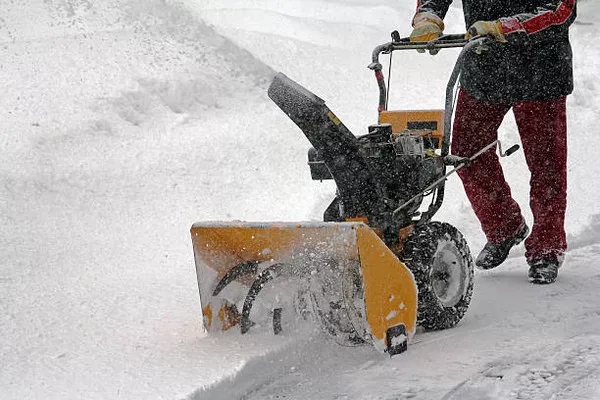Winter brings the beauty of snow-covered landscapes, but it also presents the challenge of clearing snow from driveways, walkways, and other critical areas. For homeowners and businesses alike, snow blowers have become indispensable tools in the battle against heavy snowfall. However, one question frequently arises: Do snow blowers work on uneven ground? This article delves into the mechanics, challenges, and solutions associated with using snow blowers on uneven surfaces.
Understanding Snow Blowers
Before addressing their effectiveness on uneven ground, it’s essential to understand how snow blowers operate. Snow blowers, or snow throwers, come in various types, each designed for specific conditions:
Single-Stage Snow Blowers: These are generally lightweight and suitable for light to moderate snowfall. They use an auger to scoop up snow and discharge it through a chute in one motion. These are ideal for flat, smooth surfaces.
Two-Stage Snow Blowers: These machines are more powerful and can handle heavier snowfall and larger areas. They use an auger to collect snow and an impeller to throw it out of the chute, providing greater throwing distance.
Three-Stage Snow Blowers: The most powerful of the three, these machines have an accelerator in addition to the auger and impeller, allowing them to clear snow more quickly and efficiently.
Challenges of Using Snow Blowers on Uneven Ground
Using snow blowers on uneven ground presents several challenges that can impact their efficiency and effectiveness:
Terrain Variability: Uneven ground can include everything from slight dips and bumps to more significant inclines and declines. These variations can cause the snow blower to miss spots or leave behind patches of snow.
Potential for Damage: Uneven surfaces can hide obstacles like rocks, branches, or even garden tools. These can damage the auger, impeller, or other parts of the snow blower, leading to costly repairs.
Operator Difficulty: Maneuvering a snow blower over uneven terrain requires more effort and skill. The operator must constantly adjust the machine’s height and angle to ensure thorough clearing without damaging the equipment.
Safety Concerns: Uneven ground can increase the risk of slips, trips, and falls for the operator, particularly if the snow blower is difficult to control or if the operator loses balance.
Factors Influencing Snow Blower Performance on Uneven Ground
Several factors influence how well a snow blower performs on uneven surfaces:
Type of Snow Blower: Two-stage and three-stage snow blowers are generally better suited for uneven ground due to their larger size, increased power, and the ability to handle varying snow depths and textures.
Adjustment Features: Snow blowers with adjustable skid shoes and scraper bars can be set to different heights, making them more adaptable to uneven surfaces. This helps prevent the auger from digging into the ground or missing low spots.
Machine Weight: Heavier snow blowers tend to be more stable on uneven terrain, reducing the likelihood of tipping or bouncing over bumps. However, they also require more effort to maneuver.
Auger Design: Serrated or heavy-duty augers can break through compacted snow and ice more effectively, making them more suitable for uneven ground where snow consistency may vary.
Practical Tips for Using Snow Blowers on Uneven Ground
To optimize the performance of snow blowers on uneven ground, consider the following practical tips:
Inspect the Area: Before starting, clear the area of any visible obstacles and mark hidden hazards. This can prevent damage to the snow blower and ensure a smoother operation.
Adjust the Skid Shoes: Set the skid shoes to the appropriate height to allow the auger to clear the surface without scraping the ground. Higher settings are better for gravel or uneven surfaces to prevent the auger from picking up debris.
Take it Slow: Operate the snow blower at a slower pace to maintain better control and ensure thorough clearing. This also allows the machine to handle changes in terrain more effectively.
Use Multiple Passes: For heavily uneven areas, multiple passes may be necessary. Start with a higher setting and gradually lower it with each pass to achieve a more even clearing.
Regular Maintenance: Keep the snow blower in good condition by performing regular maintenance checks. Ensure the auger, impeller, and other parts are free from damage and functioning correctly.
Alternative Solutions for Uneven Ground
In cases where snow blowers may not be the best option for extremely uneven ground, alternative solutions can be considered:
Snow Shovels: For smaller areas, manually shoveling snow may be more practical. Use ergonomic shovels to reduce physical strain.
Snow Plows: For larger properties, attaching a snow plow to a vehicle such as an ATV or tractor can provide an effective way to clear snow from uneven terrain.
Snow Removal Services: Hiring professional snow removal services can ensure that snow is cleared efficiently and safely, especially in areas with significant terrain challenges.
See Also What Type Of Oil To Use For Snowblower
Conclusion
Snow blowers can indeed work on uneven ground, but their effectiveness largely depends on the type of machine, terrain conditions, and how well the equipment is used and maintained. While single-stage snow blowers may struggle with significant unevenness, two-stage and three-stage models offer better performance due to their power and adaptability. By following best practices, such as adjusting skid shoes, operating at a slower pace, and performing regular maintenance, users can enhance the efficiency of snow blowers on uneven surfaces.
However, for extremely uneven or challenging terrains, alternative snow removal methods may be more appropriate. Ultimately, understanding the limitations and capabilities of snow blowers and selecting the right approach for the specific conditions can ensure that winter weather is managed effectively, keeping pathways clear and safe throughout the season.

